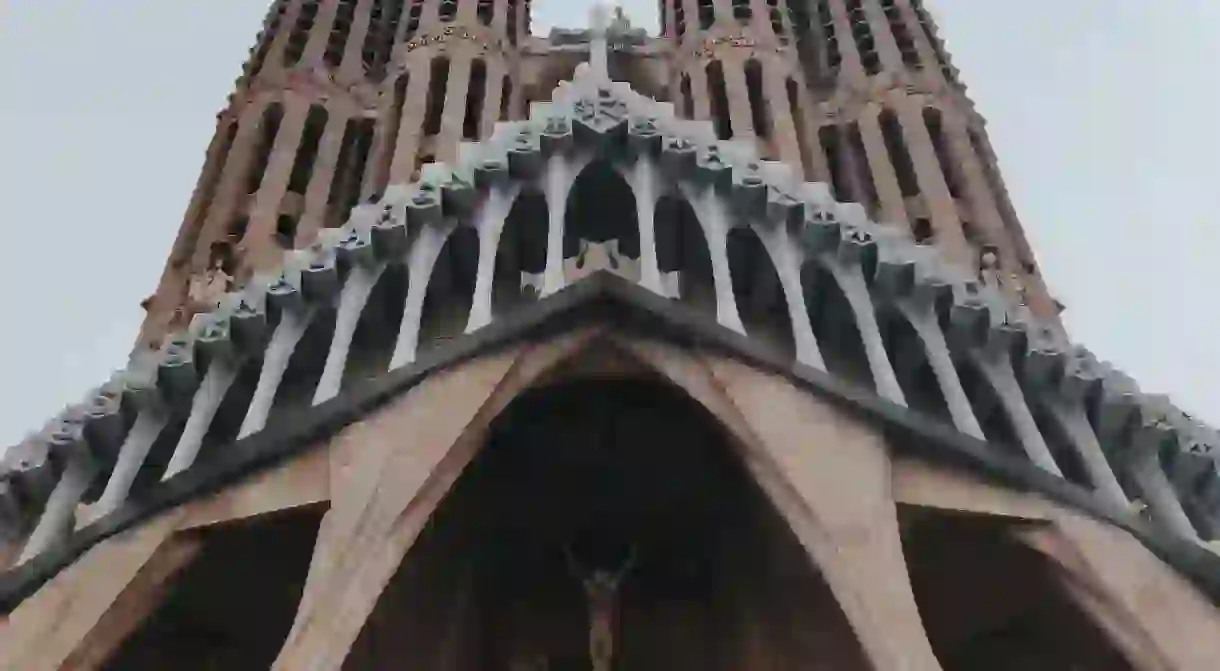Gorgeous Perspectives Of The Sagrada Família

The ‘Basílica i Temple Expiatori de la Sagrada Família’, more commonly know as the Sagrada Família (meaning ‘Holy family’) is by far Barcelona’s most iconic landmark, attracting an estimated 3 million visitors a year. Although construction began in 1882, by 2015 this mind-blowing building was estimated to be only about 70% complete. Rumors have it that construction may be completed in 2026, a year that will also mark the centenary of the death of architect Antoni Gaudí, the mastermind behind the Sagrada Família’s iconic design.
Sagrada Família
The Sagrada Família is a world-famous basilica located in Barcelona, Spain. It is an iconic symbol of the city and one of the most recognized architectural masterpieces in the world. The basilica was designed by the renowned Catalan architect Antoni Gaudí, who devoted the last years of his life to its construction.

Origins – Josep Maria Bocabella i Verdaguer
The origins of the Sagrada Família date back to 1866 when a devout bookseller named Josep Maria Bocabella i Verdaguer founded the Spiritual Association of Devotees of Saint Joseph. The association aimed to construct an expiatory temple dedicated to the Holy Family, based on a vision Bocabella had during a trip to Italy. The initial architect of the project, Francisco de Paula del Villar, began the construction in 1882 but resigned a year later due to disagreements with the project’s direction.

Antoni Gaudí
In 1883, Antoni Gaudí, then a young and relatively unknown architect, took over the project and transformed it into his life’s work. Gaudí envisioned a grand and unique structure that would blend various architectural styles, including Gothic, Art Nouveau, and his own distinctive style inspired by nature. He drew inspiration from natural forms, incorporating organic shapes, intricate details, and symbolism into the design.
Interruptions
Construction progressed slowly due to financial difficulties and various interruptions, including the Spanish Civil War and Gaudí’s own death in 1926. At the time of Gaudí’s passing, only a small portion of the basilica was completed. Despite this, Gaudí left behind detailed plans and models, which became the foundation for continuing the construction in the following decades.
Work on the Sagrada Família has been ongoing ever since, relying solely on private donations and revenue generated from tourism. Different architects and craftsmen have carried on Gaudí’s vision, interpreting his designs and incorporating modern techniques and materials. The construction process has been complex and time-consuming, with periods of slow progress and bursts of accelerated advancement.
Current State
Today, the Sagrada Família remains unfinished but continues to attract millions of visitors from around the world. The construction work focuses on completing the central nave and the impressive towers that will form the basilica’s skyline. The estimated completion date is projected to be in the first third of the 21st century, around 2026, to coincide with the 100th anniversary of Gaudí’s death.
Despite its incomplete state, the Sagrada Família is recognized as a UNESCO World Heritage site and stands as a testament to Gaudí’s genius and vision. Its striking facades, intricate sculptures, and breathtaking stained glass windows continue to inspire awe and admiration, making it a must-visit landmark for architecture enthusiasts and tourists in Barcelona.
By Tara Jessop
Did you know – Culture Trip now does bookable, small-group trips? Pick from authentic, immersive Epic Trips, compact and action-packed Mini Trips and sparkling, expansive Sailing Trips.













